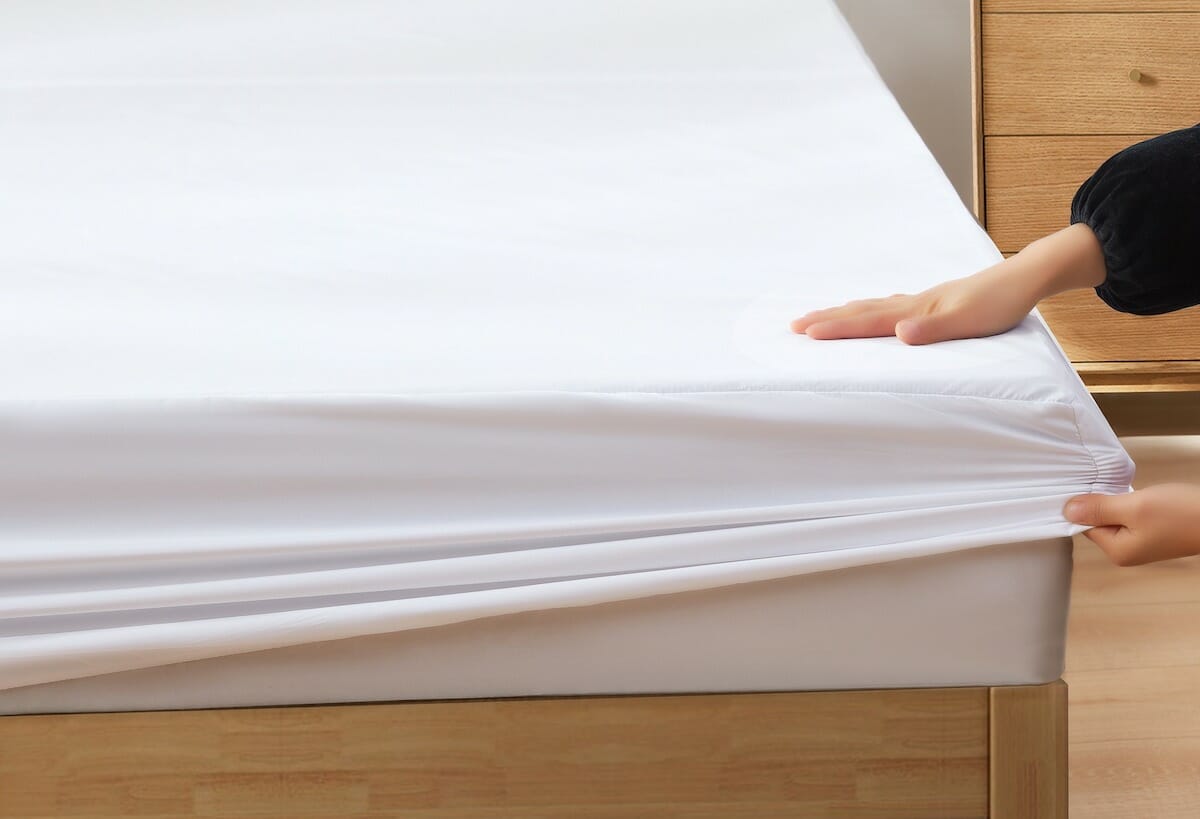What are dust mites?
Dust mites are microscopic insect-like creatures that live in house dust and household items such as furniture and bedding. Dust mites feed on dead skin cells, fungi, yeasts and bacteria.
Most households contain some species of dust mites, and they are present in approximately 84% of homes in the U.S. Dust mites thrive in warm, moist environments, ideally those with around 70% humidity, and typically live on items that dead skin cells collect on, such as bedding, furniture that contains fabric, curtains, carpets or rugs, mattresses, pillows, cloths, toys with fabric.
Several environmental factors can trigger eczema, including live dust mites, their remains, and their droppings. Now that our weather is getting cooler homes are being closed up and the heat comes on, dust mites may present a larger problem.
Do dust mites cause eczema?
Dust mites do not attach to the skin or pierce it. Their droppings may trigger eczema, but only in people prone to eczema.
Eczema is the name for a group of seven skin conditions that cause patches of skin to become itchy, discolored, and swollen. Some 31 million people living in the United States have eczema.
Most people can reduce symptoms of eczema linked with dust mite exposure by following an eczema treatment plan and taking steps to reduce the number of dust mites and dust mite allergens in their homes and household items.
People can have an allergic reaction to numerous mite allergens. Currently, researchers have identified 24 potential allergens associated with dust mites.
Many people experience a reaction to dust mites when their skin comes into contact with a dust mite allergen. And, because they are so tiny, dust mites can also be inhaled. Many people inhale dust mite allergens, which can cause an immune response and inflammation or irritation in the nose, throat, or lungs.
Skin barrier damage from dust mites’ allergens can reach lower levels of cells that can spark an immune cascade, resulting in inflammation that can trigger or worsen eczema symptoms in people prone to it. If dust mite allergens damage the skin barrier, it is also less capable of preventing exposure to other allergens.
Other risks of dust mites: Many people who do not have eczema, or are not prone to it, have a house dust allergy and are allergic to dust mite allergens. Symptoms of dust mite allergies tend to occur year-round and worsen while sleeping because of exposure to allergens in bedding, pillows, and mattresses.
Common symptoms of a dust mite allergy include:
nasal congestion, sneezing, sinus inflammation, and a postnasal drip
itchy skin
cough
unexplained exhaustion
trouble sleeping because of wheezing, coughing, or difficulty breathing
The allergens in dust mites can also trigger other allergic conditions, such as:
allergic asthma
allergic rhinitis with only nose symptoms
allergic rhinoconjunctivitis with nose and eye symptoms
sinusitis
increased sensitivity to other allergens and irritants such as pollution, dry air, smoke, and pollen
Treatment
People with eczema can manage exposure to triggers such as dust mites, but they must still seek medical treatment for eczema and use other methods to help prevent it from worsening.
There are many medical treatment options for eczema. Consult with your health practitioner, or a licensed Dermatologist for information about over-the-counter or prescription relief medications.
Preventing dust mite allergies
While there is no way to completely get rid of dust mites, there are several strategies for reducing exposure to them. Tips for reducing dust mites include:
dusting household surfaces as often as possible with a wet mop or damp dusting cloth
vacuuming carpets and rugs several times each week
cleaning furniture, toys, and other household items weekly, paying particular attention to vacuuming the seams where dust mites tend to accumulate
washing bed linens at least twice each week and pillows and duvets every 4–6 weeks in water that is 140°F, and drying items using a tumbling, hot setting in a dryer
using an air purifier that contains a high-efficiency particulate air (HEPA) filter, especially in bedrooms
vacuuming mattresses thoroughly every few weeks
washing or dry-cleaning cushion covers, curtains, and fabric-containing toys regularly in water that is at least 140°F
choosing furniture in materials that are easier to fully clean, such as leather, vinyl, or wood
switching fabric curtains for plastic roller blinds
changing carpeted flooring to materials that can be easily cleaned, such as wood, linoleum, vinyl, or laminate
allowing good airflow in the home to reduce humidity, or using a dehumidifier to keep humidity levels below 50%
replacing mattresses and pillows when they become old or too hard to clean, and buying washable pillows
using anti-dust mite covers to protect mattresses, pillows, and duvets
keeping items that sit on open shelves such as books inside a cupboard, and keeping toys in a closet or toy box
putting non-washable toys in a plastic bag in the freezer for at least 24 hours, then brushing off potential dust mites
reducing excess items in the home
brushing pets frequently, ideally outdoors
wearing rubber gloves and a face mask while cleaning
if considering new or additional pets, looking into breeds or species that shed less fur and dander
using acaricides short term, which are chemicals that can kill house dust mites
cleaning vacuum filters frequently and using a low-dust exhaust vacuum cleaner
using cotton bed linens
When to contact a doctor
People should talk with a doctor, or a doctor that specializes in skin care called a dermatologist, if they experience unexplained skin symptoms, such as:
itchiness
rash
inflammation
discoloration
oozing or weeping
crusting
redness
roughness
scaling
People with skin conditions such as eczema should also speak with a doctor if their symptoms worsen or do not ease with treatment.
Sources:
https://www.medicalnewstoday.com/articles/do-dust-mites-cause-eczema
Dust mite allergy. (2015).
http://www.aafa.org/page/dust-mite-allergy.aspx
Dust mite allergy. (n.d.).
Fung, C.-K., & Hon, K.-L. (2015). Complementary and alternative medicine for allergic rhinitis: What is the evidence?







